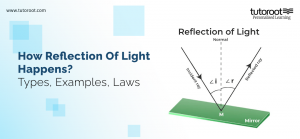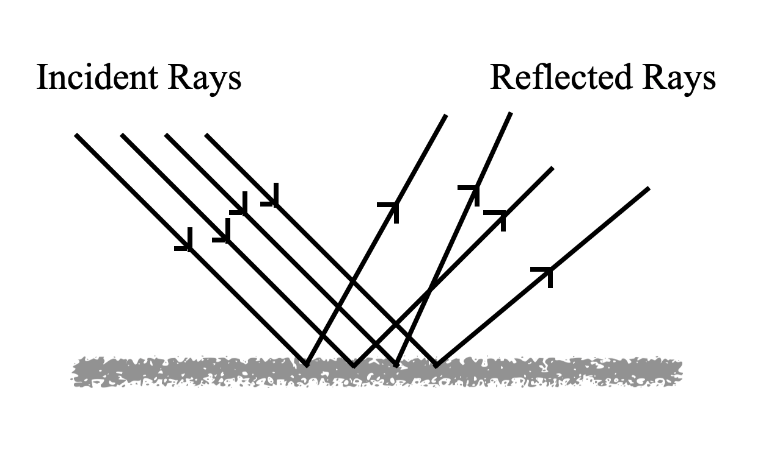How Reflection of Light Happens? – Types, Examples, Laws
Have you ever considered why we can see our reflection in a mirror? It is due to a phenomenon called reflection. Light waves, sound waves, and water waves all can reflect. Let us learn about light reflection and the many forms of reflection in this session.
What is Light Reflection?
The reflection of light happens when a light beam contacts a smooth polished surface and bounces back. The light rays are reflected when they hit the surface. The bounced-back ray is known as a reflected ray. Normal is the name given to a perpendicular line drawn on a reflective surface.

The normal and reflecting surfaces are concerned with the angle of incidence and the angle of reflection.
Types of Light Reflection
There are three types of Reflection of light. Here is a brief discussion:
- Specular reflection
- Diffused Reflection
- Multiple reflections
Regular or Specular Reflection

Specular Reflection is a clear reflection, similar to what you see in a mirror. A mirror is constructed of glass that has been uniformly coated with a highly reflecting substance, such as powder. This flat surface consistently reflects all incident light portrayed in front of it. The angles of reflection between two distinct points vary very little. Which means the reflection formed is super clear.
Diffused Reflection
Apart from mirrors, other reflective surfaces with an extremely rough texture due to surface wear and tear, such as scratches, dents, or filth, are considered diffused reflections. It is sometimes important to consider the substance of the surface. These all result in the reduction of both the brightness and the quality of the reflection.

When compared between sites on such uneven surfaces, the angle of reflection is utterly arbitrary. Rays’ incident at slightly different spots on a rough surface is reflected in entirely opposite directions making diffused reflection.
Multiple reflections
If an object is placed in front of a mirror, it creates a single reflection, similarly, if another mirror is placed in front of the mirror, it reflects the same light source multiple times. It is because reflecting surfaces such as mirrors are excellent at retaining the intensity of light in a reflection. These reflections are feasible to the light intensity. Every reflection is an outcome of the object. That outcome of the object again reflects and forms repeating reflections.
Laws of Reflection of Light
The rules of reflection govern how incident light rays are reflected on reflecting surfaces such as mirrors, flat metal surfaces, and clear water. Consider the flat mirror seen in the illustration above. According to the rule of reflection,

- The same plane is shared by the incident ray, reflected ray, and normal.
- The incidence angle is equal to the reflection angle.
Conclusion
If you want to learn more about reflections of light, sign up for Tutoroot now and get access to personalized Learning sessions that will answer all of your questions.
FAQ’s
Define reflection of light.
The reflection of light happens when a light beam contacts a smooth polished surface and bounces back.
What is the law of reflection of light?
The law of reflection states that when light rays strike a smooth surface, the angle of reflection equals the angle of incidence, and the incident ray, reflected ray, and normal to the surface all reside in the same plane.
